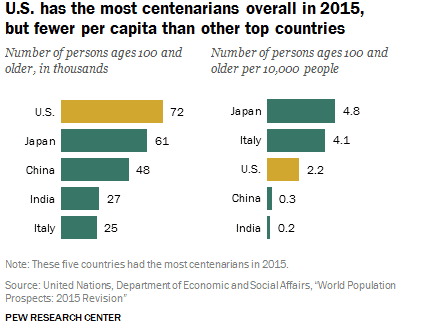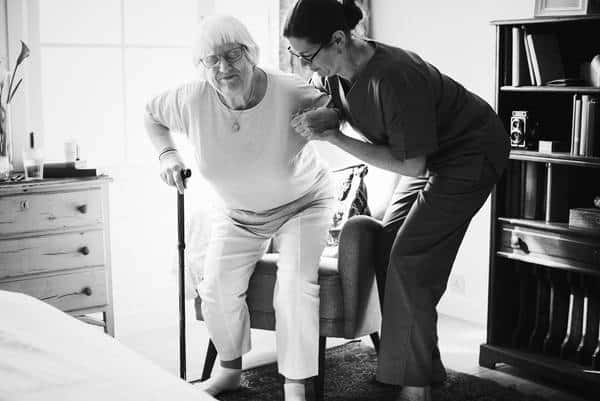 Guest Blogger: Michelle Sandwisch, APRN, FNP-C
Guest Blogger: Michelle Sandwisch, APRN, FNP-C
Michelle is an Advanced Practice Certified Nurse Practitioner licensed in Ohio. She earned a Master of Science, Family Nurse Practitioner, from Georgetown University and Bachelor of Science, Nursing, from Lourdes University. She is the owner of MyTotalBody, LLC, a personalized functional medicine practice located in Toledo, Ohio. Michelle is an active member of the Institute of Functional Medicine, and is dedicated and passionate about finding the root cause of disease and achieving optimal wellness for patients.
Michelle is specially trained in the Bredesen Protocol; a comprehensive personalized program designed to improve cognition and reverse the cognitive decline of early Alzheimer’s disease and other forms of dementia. For more information visit www.mytotalbody.me.
This article is part 3 of a 3-part series covering the impact of being a family caregiver and the importance of health prevention and self-care.
For those of you following this blog series, in part 1, we addressed the dismal trend in the rising numbers of cognitive decline & Alzheimer’s disease and in part 2, we discussed the health risks and the importance of self-care for caregivers. In the last part of this series, we will provide advice how to avoid caregiver burnout and support your own health to help live a full and high quality life.
Centenarians, which are individuals who reach the age of 100 years or more, are currently the fastest growing population. According to Pew Research, in 2015, there were nearly half a million centenarians, more than four times than in 1990. 7 Across the globe, it is projected by 2050 that there will be 3.7 million centenarians. The United States had the most centenarians, overall in 2015, estimated at approximately 72,000.7

How do these centenarians keep themselves healthy?
Dan Buettner, author of Blue Zones teamed with National Geographic to study the world’s longest-lived people to answer this question. What they found is that lifestyle and environment were the main drivers in determining longevity.1 Only about 20% of how long the average person lives is determined by their genetics. After sorting out the details of their research, Buettner and his team also found nine evidence-based common denominators that they endearingly dubbed “Power 9®” principles shared by the world’s longest living people. They are as follows:
- Move Naturally: The world’s longest-lived people don’t pump iron, run marathons or join gyms. Instead, they live in environments that constantly nudge them into moving without thinking about it. They grow gardens and don’t have mechanical conveniences for house and yard work.
- Purpose: The Okinawans call it “Ikigai” and the Nicoyans call it “plan de vida;” for both it translates to “why I wake up in the morning.” Knowing your sense of purpose is worth up to seven years of extra life expectancy
- Down Shift: Even people in the Blue Zones experience stress. Stress leads to chronic inflammation, associated with every major age-related disease. What the world’s longest-lived people have that we don’t are routines to shed that stress. Okinawans take a few moments each day to remember their ancestors, Adventists pray, Ikarians take a nap and Sardinians do happy hour.
- 80% Rule: “Hara hachi bu” – the Okinawan, 2500-year old Confucian mantra said before meals reminds them to stop eating when their stomachs are 80 percent full. The 20% gap between not being hungry and feeling full could be the difference between losing weight or gaining it. People in the Blue Zones eat their smallest meal in the late afternoon or early evening and then they don’t eat any more the rest of the day.
- Plant Slant: Beans, including fava, black, soy and lentils, are the cornerstone of most centenarian diets. Meat—mostly pork—is eaten on average only five times per month. Serving sizes are 3-4 oz., about the size of a deck of cards.
- Wine @ 5: People in all Blue Zones (except Adventists) drink alcohol moderately and regularly. Moderate drinkers outlive non-drinkers. The trick is to drink 1-2 glasses per day, with friends and/or with food. And no, you can’t save up all week and have 14 drinks on Saturday.
- Belong: All but five of the 263 centenarians that were interviewed belonged to some faith-based community. Denomination doesn’t matter. Research shows that attending faith-based services four times per month will add 4-14 years of life expectancy.
- Loved Ones First: Successful centenarians in the Blue Zones put their families first. This means keeping aging parents and grandparents nearby or in the home (It lowers disease and mortality rates of children in the home too). They commit to a life partner (which can add up to 3 years of life expectancy) and invest in their children with time and love (They’ll be more likely to care for you when the time comes).
- Right Tribe: The world’s longest-lived people chose–or were born into–social circles that supported healthy behaviors, Okinawans created “moais”–groups of five friends that committed to each other for life. Research from the Framingham Studies shows that networks of long-lived people have favorably shaped their health behaviors. 1
These are solid, standards based on Buettner’s work that are easy for the average person to integrate into their lives to increase their odds of living longer and healthier, but what about the person who is caretaking? As caregivers well know, stress levels and priorities shift in everyday life making the likelihood of self-care harder and less likely! The Family Caregiver Alliance®, reports that caregivers report “sleep deprivation, poor eating habits, failure to stay in bed when ill and postponement of or failure to make medical appointments for themselves”. 2 More than likely, this resonates to many caregivers and it is known that these daily activities when executed poorly lead to decline in one’s own health.
Given the complexities of caregiving, how do caregivers find the time and energy to make their own care a priority so that they can integrate strategies like Buettner’s “Power 9®”? Caregivers’ days are often challenging with all that life is demanding from them. An important consideration of a caregiver is to know that one’s health is as important as those that you are caring for. To implement change for better health does not have to be done on a grand scale, nor quickly. Small, incremental changes can make a huge difference in your life. The important thing is not to get overwhelmed with doing everything right at first; Just start! To begin, here are some quick and easy steps:
Fitting in Fitness: The new smoking is sitting! Wear a pedometer or a watch that counts steps. Aim for 10,000 steps per day. Most mobile phones and watches with fitness technology also have apps that can be set to remind you to get moving every hour. Active Older Adult (AOA) programs are designed for men and women in their 50’s and older and are another option. Each YMCA of Greater Toledo branch offers different programming, promoting fitness and well-being while fostering friendships and camaraderie. Check the branch nearest you for current information.Branches of the YMCA of Greater Toledo offer SilverSneakers® and Silver&Fit® memberships, available with participating insurance plans. Alternatively, if you are a bit more advanced but have little time to fit in some fitness, high Interval Intensity Training (HIIT) has been shown to be effective in lowering both visceral and interval fat and improve cardiovascular function.10 You may consider trying a phone app such as the 7-Minute App. Modify as appropriate. Consider hiring a personal trainer if you don’t know and always have a physical and check with your health care provider before starting any new workout regimen to see if a workout is appropriate.
Focus on Food: Remember, to eat food (real whole food), not too much, mostly plants.8 Minimize sugar and soda (even diet soda!). Meat should be a condiment on your plate, not take up the whole. Eat as many colors of the rainbows in plant foods as you can.6 Aim to have at least half your plate filled with vegetables with possibly a small amount of fruit. If a food is processed, your body likely won’t assimilate it as easily as a whole food such as vegetables, fruits, beans, etc. Nutrients from plants (phytonutrients) work synergistically with your body.6 For example, it has been touted that an apple contains an estimated 1200 different plant-based nutrients. A food that has been manufactured synthetically and stripped of its natural nutrients will not have the same synergistic effect and be assimilated by your body in the same way. Remember the old adage…an apple a day keeps your health care provider away!
Sleep for Success: Lack of sleep can create changes in personality and make one moody. Additionally, it is a risk factor for acquiring cognitive impairment. Deep sleep is like a power cleanse to the brain. It is like taking the trash out at night. Even a single night of sleep deprivation leads to an increased amyloid beta which is thought to be part of the pathology in Alzheimer’s and other cognitive impairment issues.9 Here are ten tips for good sleep hygiene: 1) Minimize consuming stimulants like caffeine after 2 p.m. and alcohol within 3 hours of bedtime; 2) As much as possible go to sleep and wake up at the same time of day. This will help train your biological clock; 3) Avoid getting in bed after 11 p.m.; 4) Finish eating 3 hours prior to going to sleep; 5) Avoiding napping for greater than 45 minutes during the day; 6) Take a hot bath before bed to raise your body temperature before bedtime; 7) Don’t stay in bed more than 20-30 minutes trying to fall asleep. Leave your bedroom if you must and read or meditate. Do not turn on the television; 8) Consider using amber glasses for at least 30 minutes before bedtime to reduce blue light exposure; 9) Make sure your sleeping temperature is not too hot or too cold; and 10) Consider using hypoallergic pillows. 6
The Power of Positivity: Positivity expert, Rick Hanson, PHD states that “as a consequence of survival, the human brain holds onto negative thoughts like Velcro and lets go of positive thoughts like Teflon. 4 It takes approximately (5) positive thoughts to overcome (1) negative event that occurs during our daily lives.” This means that we need to work mindfully to train our brain to overcome negative thoughts every day, especially during times of added stress. Realize that positive thinking begins with your thoughts and familiar patterns. What you think becomes how you experience your life. It is important to become aware of your thoughts and challenge negative thinking. Retrain thinking by replacing a negative thought with a positive thought. Instead of “I can’t,” think “I can”. Creating space, if accomplished even for just an instant, is another helpful strategy to help start rewiring your own behavior. One way to achieve this is to remember to take practice “pausing.” For example, before you take one step to start your day, claim time for yourself and start with a pause and if possible, pause each hour. Try doing this with this simple 4 breathing exercise: 1) Breathe in for 4 counts; 2) Hold for 4 counts; 3) Breathe out for 8 counts; repeat 4-5 times.
Take a Healthy Break: When you get tired and frustrated, remember to treat yourself as you would a good friend or loved one. We often put others before ourselves, but help or advice would you give a friend or a loved one living in the same circumstances? Learn to be kind to yourself and accept and ask for help. Additionally, if a friend or family member offers to help or give you a break, take them up on it. Respite Care that provides temporary care on an as needed or pre-scheduled basis can help provide relief to care givers. They can give caregivers the help and rest they need to stay healthy.
Make Time for Friends: Did you know that feeling lonely and isolated has a higher associated chronic illness risk of death associated with it then physical inactivity, smoking, or drinking heavily?5 Social isolation also increases inflammation and decreases our ability to control stress.3 To help combat caregiver loneliness, caregivers should keep in touch with their friends and add social time to their calendars. Joining a support group may also be helpful. Spending time with friends and/or like-minded people going through similar circumstance may give caregivers time to share stories, decompress and reflect and reduce the burdens of caregiver stress to possibly avoid caregiver burnout.
Educate Yourself: Caregiving can be an endless and thankless job with unique challenges. Taking time to fully educate yourself on the resources that are out there to help cope and understand what to expect can help caregivers take care of their heath, avoid guilt, depression and caregiver burnout. Below are a few other resources to help find you find a path to successfully navigate your way to better health:
- Alzheimer’s Association of Northwest Ohio (NWO): https://www.alz.org/nwohio
- Nationally, the Alzheimer’s Association is the largest non-profit funder of Alzheimer’s disease research. Currently in Northwest Ohio, almost 32,000 people are living with Alzheimer’s disease, and 96,000 family and friends are providing care. Their mission is “to eliminate Alzheimer’s disease through the advancement of research; to provide and enhance care and support for all affected; and to reduce the risk of dementia through the promotion of brain health.
- The End of Alzheimers: The First Program to Prevent & Reverse Cognitive Decline: https://www.ahnphealth.com/dr-bredesen.html
- Bredesen and colleagues have identified several subtypes of Alzheimer’s disease and developed ReCODE – reversal of cognitive decline – a protocol that offers a new approach to treatment that has reversed symptoms in patients with mild cognitive impairment and Alzheimer’s disease. A groundbreaking plan to prevent and reverse Alzheimer’s Disease that fundamentally changes how we understand cognitive decline. A handful of health care providers such as myself have been trained in the Bredesen Protocol and can be of help to you and your loved ones.
- Caregivers Alliance: https://www.caregiver.org
- Family Caregiver Alliance(FCA) is a national nonprofit caregiver support organization headquartered in San Francisco, California. Beginning as the all-volunteer Family Survival Project in 1977, it was founded to serve the needs of those caring for a friend or family member with cognitive impairment.
- The 36-Hour Day: A Family Guide to Caring for People Who Have Alzheimer Disease, Related Dementias, and Memory Loss: https://www.amazon.com/36-Hour-Day-Alzheimer-Disease-Dementias/dp/1455521159
- The 36-Hour Day is a must have “bible” for families who love and care for people with such is an excellent family guide to caring for people who have Alzheimer Disease, other dementias, and symptoms of memory Loss.
I thank Arista Home Care Solutions for asking me to share my insights on the importance of self-care. As a caregiver, I hope that I have conveyed the high-stakes involved in not only addressing your loved ones needs, but also your own needs and given you some easy strategies to implement in your daily lives to help you create and sustain your health.
References
- Buettner, D. (2016). Power 9®: Reverse engineering longevity. Retrieved from: https://www.bluezones.com/2016/11/power-9/
- Caregiver Family Alliance®. (2012). Taking care of YOU: Self-care for family caregivers. Retrieved from: https://www.caregiver.org/taking-care-you-self-care-family-caregivers
- Cole, S.W., Hawkley, L.C., Arevalo, J.M., Sung, C.Y., Rose, R.M., Cacioppo, J. T. (2007). Social regulation of gene expression in human leukocytes. Genome Biology, 8(9), p 189.
- Hanson, R. (2011) Just one thing. New Harbinger Publications: Oakland, CA.
- Holt-Lunstad, J., Smith, T.B., Layton, J,B. (2010). Social relationships and mortality risk: A meta-analytic review.PLoS Medicine, 7 (7): e1000316 DOI: 1371/journal.pmed.1000316
- Institute of Functional Medicine. (2018). IFM tooklit materials. Retrieved from https://www.ifm.org
- Pew Research Center. (2016). World’s centenarian population projected to grow eightfold by 2050. Retrieved from: http://www.pewresearch.org/fact-tank/2016/04/21/worlds-centenarian-population-projected-to-grow-eightfold-by-2050/
- Pollan, Michael. (2009). In defense of food: An eater’s manifesto. Penguin: New York.
- Shokri-Kojori, E., Wang, G.J., Wiers, C.E., Demiral, S.B., Guo, M., Kim, S.W., … Volkow N,D. (2018). β-Amyloid accumulation in the human brain after one night of sleep deprivation Proc Natl Acad Sci, 115(17), pp 4483-4488.
- Turk, Y., Theel, W., Kasteleyn, M.J., Fressen, F., Rudolphus, A., Taube, C., Braunstahl, G. (2017). High intensity training in obesity: a Meta-analysis. Obesity Science Practice, 3(3), pp 258-271.

 Arista Wins Top Workplaces Award
Arista Wins Top Workplaces Award


